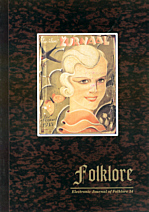Schools of Estonian Graphic Art in Journalism in the 1930s
Schools of Estonian Graphic Art in Journalism in the 1930s
Author(s): Merle TalvikSubject(s): Fine Arts / Performing Arts
Published by: Eesti Kirjandusmuuseum
Keywords: graphic design journals; applied graphics; Estonian graphic art; State Applied Art School; Higher Art School Pallas
Summary/Abstract: The basis for the development and spread of graphic design in the1920s and 30s in Estonia was the rapid progress of the country’s economy and commerce. The rise in the number of publications led to a greater need for designers. The need for local staff arose in all fields of applied graphics. In the 1930s, graphic artists were trained at two professional art schools – the State Applied Art School (Riigi Kunsttööstuskool) in Tallinn and the Higher Art School(Kõrgem Kunstikool) Pallas in Tartu. The present article focuses on the analyses of the creative work of the graphic artists of both schools, trying to mark the differences and similarities.The State Applied Art School was established in 1914. In 1920, GüntherReindorff started working as a drawing teacher. His teaching methods and the distinguished style of his creative work became an inspiration for an entire generation of Estonian graphic designers. The three well-known students and followers of G. Reindorff were Johann Naha, Paul Luhtein and Hugo Lepik. The teachers and students of the State Applied Art School shaped greatly the appearance of magazines printed in Tallinn. Of modern art movements, art deco found most followers. National ornament became a source for creative work. Distinct composition and beautifully designed legible script are also the features that resulted from the systematic education of the State School of Applied Art.The curriculum of the Higher Art School Pallas, established in 1919, was based on western European art experience. Therefore the visual language of the artists from the Tartu school is often picturesque; influences of expressionism and constructivism are visible. Individualities emerge very clearly. National propaganda is latent in comparison with the Tallinn school, but the script is often unprofessional. The most important representatives of the Tartu school were Nikolai Triik, Ado Vabbe ja Hando Mugasto. Very productive graphic designers were also Jaan Vahtra, Peet Aren, Ernst Kollom and Agu Peerna. In addition to these names, there was quite a number of self-taught graphic designers active in Estonia, such as Heino Lehepuu, Paul-Aleksander Pedersen, Karl Taev, August Vahtel, Karl Vanaveski and Valter Kõrver. They were mostly involved in advertising art.
Journal: Folklore: Electronic Journal of Folklore
- Issue Year: 2006
- Issue No: 34
- Page Range: 103-130
- Page Count: 28
- Language: English

